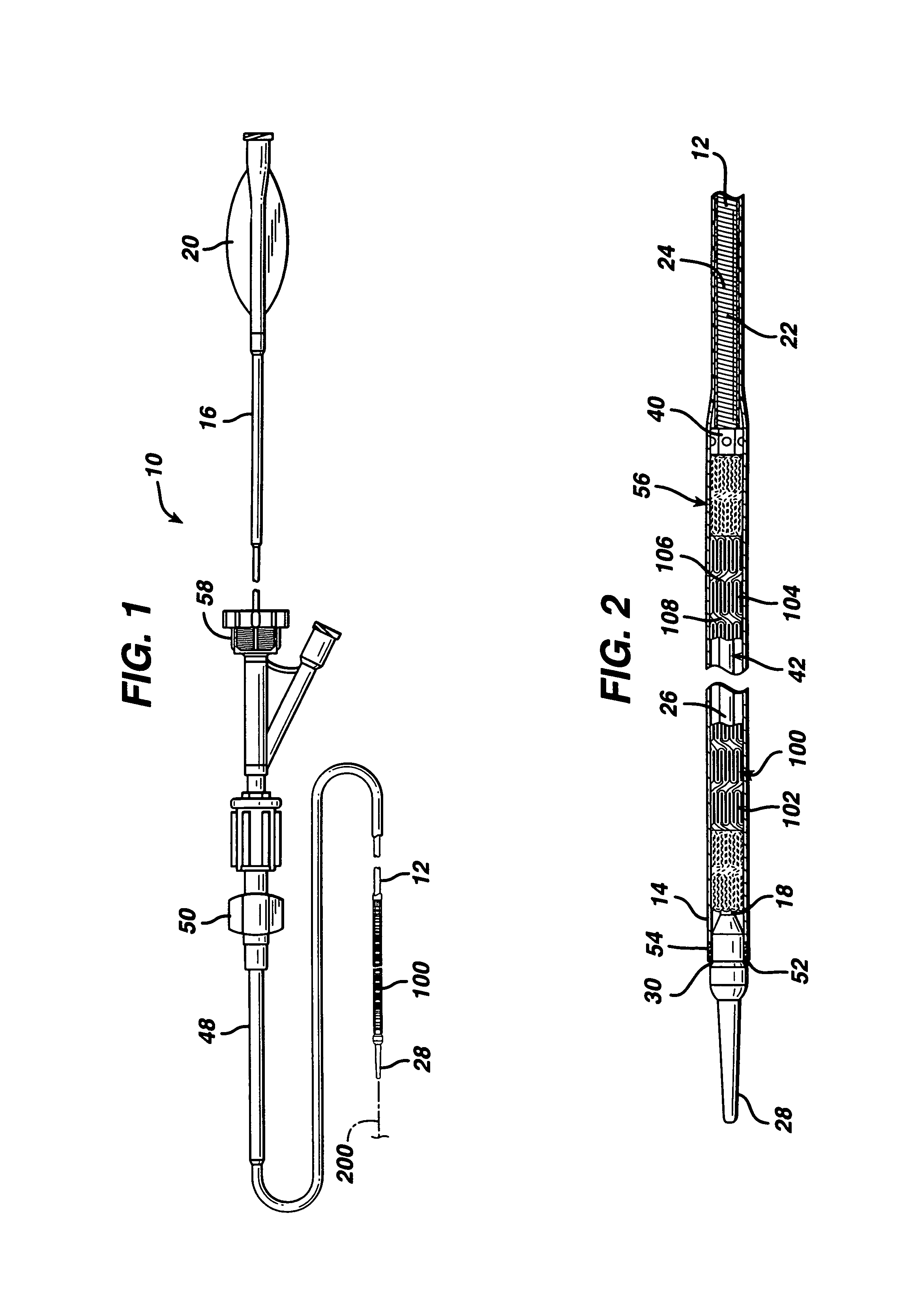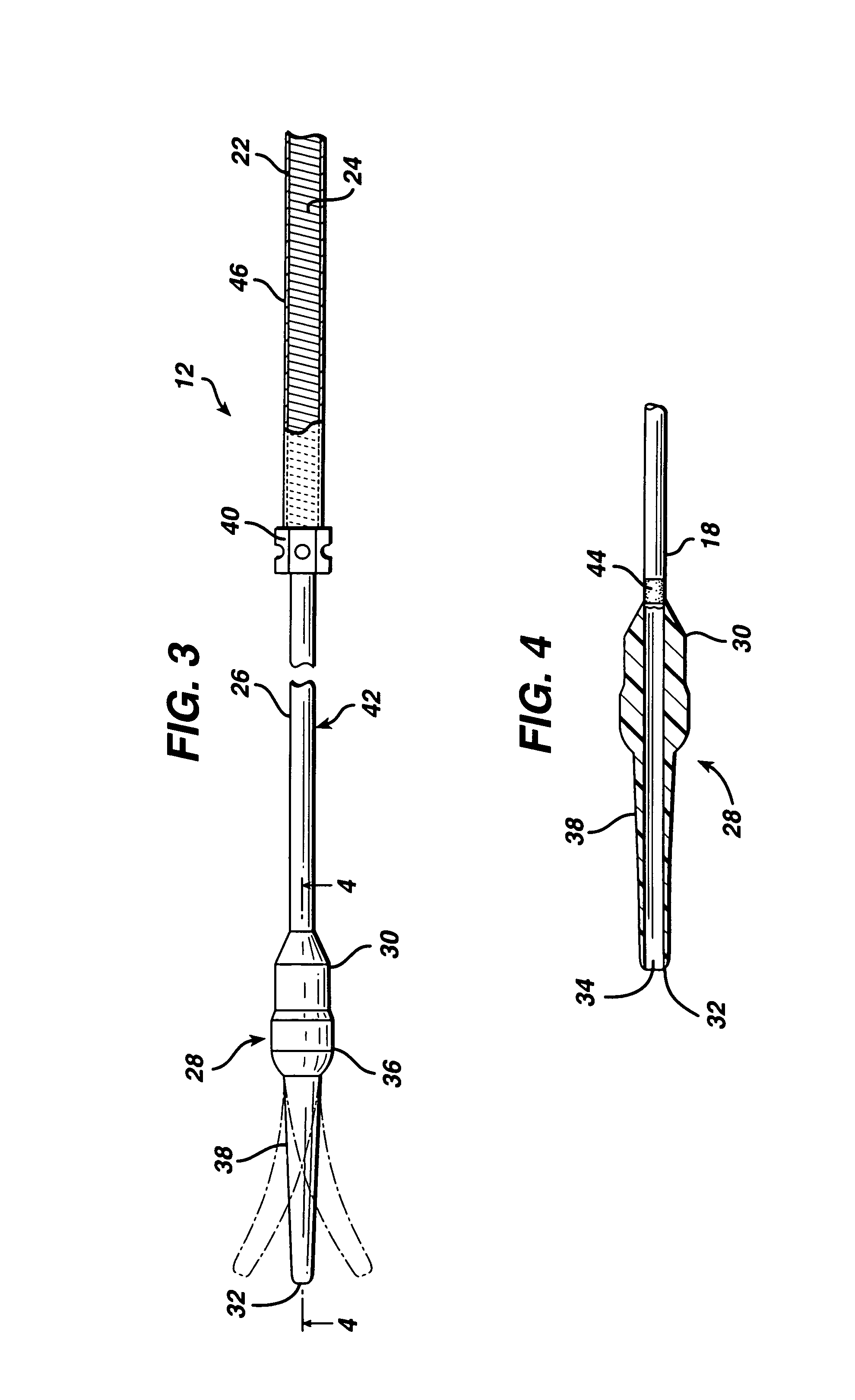Self-expanding stent delivery system
a stent and self-expanding technology, applied in the field of stents, can solve the problems of inability to use balloon-expandable stents in some vessels, injury to patients, and inability to meet the needs of patients, so as to reduce the chance of damage to the stent during deployment, reduce the force required for stent deployment, and facilitate the effect of placemen
- Summary
- Abstract
- Description
- Claims
- Application Information
AI Technical Summary
Benefits of technology
Problems solved by technology
Method used
Image
Examples
Embodiment Construction
[0031]FIGS. 1 and 2 illustrate an exemplary self-expanding stent delivery apparatus 10 in accordance with the present invention. Apparatus 10 comprises inner and outer coaxial tubes. The inner tube is called the shaft 12 and the outer tube is called the sheath 14. A self-expanding stent 100 is located within the sheath 14, wherein the stent 100 makes frictional contact with the sheath 14 and the shaft 12 is disposed coaxially within a lumen of the stent 100.
[0032]Shaft 12 has proximal and distal ends 16 and 18 respectively. The proximal end 16 of the shaft 12 has a Luer guidewire hub 20 attached thereto. As seen best from FIG. 10, the proximal end 16 of the shaft 12 is preferably a ground stainless steel hypotube. In one exemplary embodiment, the hypotube is stainless steel and has a 0.042 inch outside diameter at its proximal end and then tapers to a 0.036 inch outside diameter at its distal end. The inside diameter of the hypotube is 0.032 inch throughout its length. The tapered o...
PUM
 Login to View More
Login to View More Abstract
Description
Claims
Application Information
 Login to View More
Login to View More - R&D
- Intellectual Property
- Life Sciences
- Materials
- Tech Scout
- Unparalleled Data Quality
- Higher Quality Content
- 60% Fewer Hallucinations
Browse by: Latest US Patents, China's latest patents, Technical Efficacy Thesaurus, Application Domain, Technology Topic, Popular Technical Reports.
© 2025 PatSnap. All rights reserved.Legal|Privacy policy|Modern Slavery Act Transparency Statement|Sitemap|About US| Contact US: help@patsnap.com



